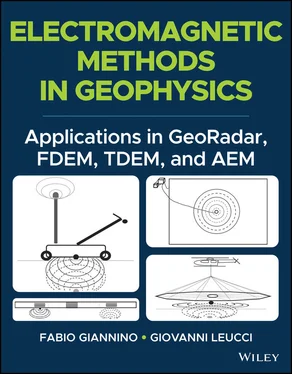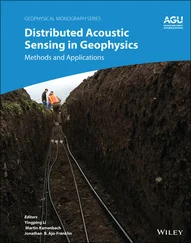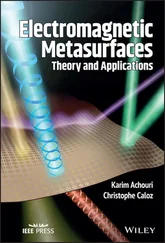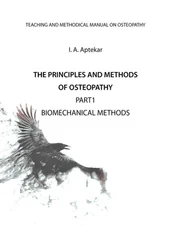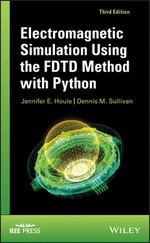The architecture of modern ground conductivity meters is based on the above principle, and systems are built to respects to above parameters to “work” under these conditions.
Let us verify whether, under common site conditions that may be found during any FDEM data acquisition campaign, the validity of the low induction number hypothesis, may apply. To do this, let us imagine a homogeneous half‐space of 100 mS/m electrical conductivity σ; the frequency of the EM signal emitted by the transmitting coil being of 10 KHz and the spacing between transmitting and receiving coil 4 meters.
The greatest part of the geological material shows magnetic permittivity equal to 4*10 −7 H/m .
Under the above conditions we shall have a skin depth value equal to:

Hence, a EM signal propagating at a frequency of 10 KHz, within a half‐space having 100 mS/m electrical conductivity, will attenuate of the quantity 1/e at a depth that is equal to 16 meters ( skin depth ).
Because we assumed that the inter‐coil spacing equals 4 meters, then B , the induction number equals to:

As B is small enough than the hypothesis relating with the low induction number that led to the formulation of (measured voltage e(t) varies in 2.2.13), can be considered valid.
2.2.4. The EM signal with respect to the depth
As already shown in Figure 2.2.6, transmitting and receiving coils may be deployed in a vertical dipole as well as in a horizontal dipole mode. In the first case ( Figure 2.2.6– 1, coils horizontal co‐planar), the vertical dipole modedata acquisition will be configured, whereas in the second ( Figure 2.2.6– 2, coils vertical co‐planar), the horizontal dipole modeshall be deployed.
In both cases, the response, given in terms of contribution to the secondary magnetic field H s, of a single thin layer located at an increasing depth within the system where the EM signal propagates, differs according to the burial depth of the thin layer itself.
In Figure 2.2.7is illustrated (J.D. McNeill, 1980) how the above‐mentioned contribution to the secondary magnetic field varies with respect to acquisition mode (dipole orientation) and investigation depth. The graph shows along the y‐axis the relative contribution to H s, and along the x‐axis the Z value is the normalized depth , that is the ratio between the depth at which a thin layer dz is located, and the inter‐coil spacing s .
The graph, is built upon the data acquired with a ground conductivity‐meter manufactured by Geonics Ltd.™, and leads to the consideration that the maximum response for the vertical dipole acquisition mode, is given by a thin layer located a depth equal to 0.4 s , but that the signal is still detectable at a depth equal to 1.5 s .
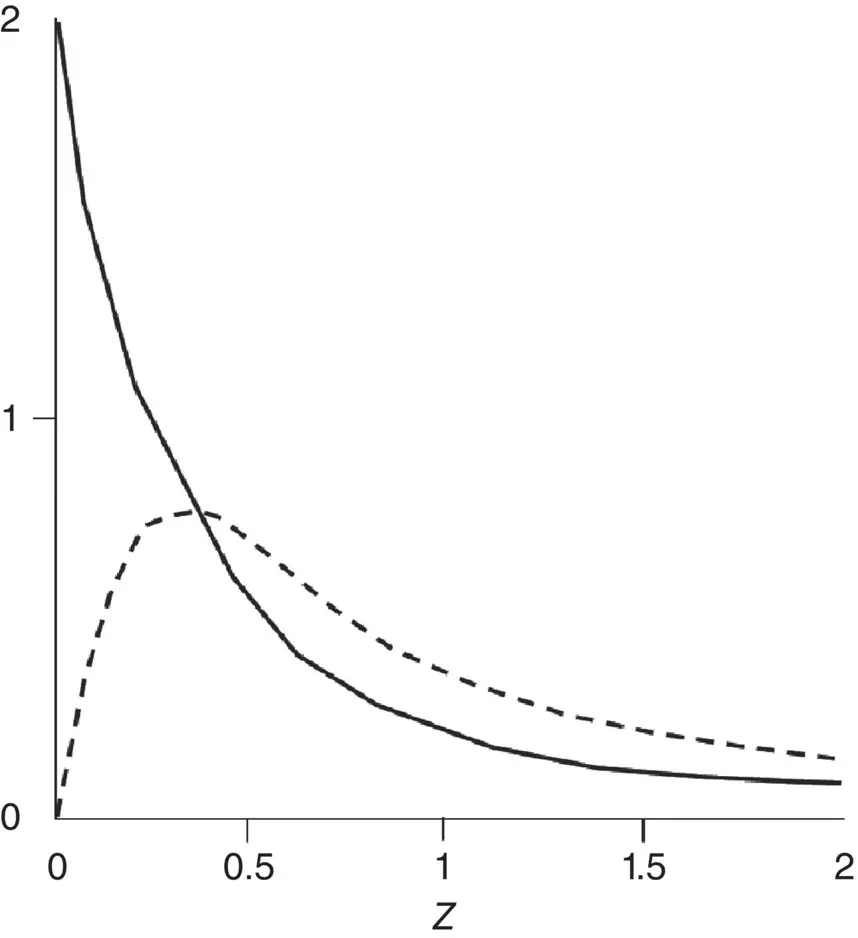
Figure 2.2.7 relative contribution to the secondary magnetic field H srespect to depth. Dashed line indicates the response of the vertical dipole acquisition mode and the solid line indicates the response of the horizontal dipole acquisition mode
(modified from J.D. McNeill, 1980).
Hence, the investigation depth equal to 0.75 s for the horizontal dipole mode, and 1.5 s , for the vertical dipole mode (P.V. Sharma, 1997). Furthermore, it can be observed that, in the first case, the mapping of object located very close to the terrain surface, is optimized, but this acquisition mode may be less sensitive to low conductive and quasi‐vertical, targets; in the case of vertical dipole acquisition mode, the instrumentation for low induction number FDEM techniques, is rather sensitive to targets, even with a relatively low electrical conductive, and showing a great dipping angle.
Finally, it is interesting to note that for the horizontal dipole mode the response due to targets located near the surface is maximum, whereas in the vertical dipole mode, this contribution becomes null: this means that, during the operation of FDEM data collection in vertical dipole mode, the objects located on the terrain surface, should not be sensed by the instrumentation.
1 ASTM D6639–01 (2008). Standard Guide for Using the Frequency Domain Electromagnetic Method for Subsurface Investigations.
2 Giannino, F. (2014). Metodi Elettromagnetici in Geofisica applicata. Acquisizione, analisi e interpretazione dei dati FDEM, TDEM e AEM in ambito geologico, ambientale e ingegneristico. Dario Flaccovio Editore.
3 McNeill, J.D. (1980). Electromagnetic terrain conductivity measurements at low induction number. Technical note TN‐6. Geonics Ltd. ( www.geonics.com).
4 McNeill, J.D. (1980). Applications of transient electromagnetic techniques. Technical note TN‐7. Geonics Ltd. ( www.geonics.com).
5 Nabighian M.N. (1980). Electromagnetic Methods in Applied Geophysics. Investigation in Geophysics No 2. Volume 2, Application, Parts A and B, ISBN 978‐0‐931830‐46‐4 (Vol.1) 978‐0‐931830‐51‐8. Society of Exploration Geophysics.
6 Parasnis, D.S. (1979). Principles of Applied Geophysics. Third edition, Chapman and Hall.
7 Sharma, P.V. (1997). Environmental and engineering geophysics. Cambridge University Press.
2.3. TIME DOMAIN ELECTROMAGNETIC (TDEM) METHOD: OPERATIVE PRINCIPLE AND THEORY
2.3.1. TDEM (Time Domain Electromagnetic)
It dates back in the 70s when the electromagnetic technique known as Time Domain Electro Magnetic Method (acronym TDEM) has been developed, almost at the same time, by the Russian, Canadian, and Australian technical and scientific community, for mineral search purposes.
Later in the 80s, TDEM found a wider application for hydrogeological purposes, and recently it has been applied for geotechnical (stratigraphic interpretation of the subsoil) and environmental studies (pollutants search, UXO search) (A. Menghini et al., 2010).
The aim of a TDEM sounding is the reconstruction of a 1D model of the subsoil to detect layers having the same characteristics in terms of electrical resistivity. The depth of investigation of a TDEM survey depends upon the characteristics of the instrumentation employed, the stratigraphic and geological conditions of the medium to be investigated and the background and or other sources of noise.
The main advantage of this technique with respect to other EM techniques (for example respect to the FDEM method), is that the TDEM method employs transient EM field: this means that the measurements of the secondary EM field is done at the receiving coil, when the transmitting coil is switched off for a very short time, called time off . During the time off , the secondary is sampled in wider “time windows,” corresponding to deeper portion of the subsoil.
The above‐described setting put the conditions to avoid (as it happens instead in the FDEM methods) to measure a very small quantity (the secondary magnetic field) in presence of another, much larger, one: the primary magnetic field, produced by the transmitting coil (P.V. Sharma, 1997; Kearey et Alii, 2002; J.D. Mc Neill, 1980). Hence, the signal measured at the receiver coil, is likely to be only due to the “contribution” given by the secondary field associated to the soil material, and not to the signal directly coming from the transmitting coil.
Читать дальше
